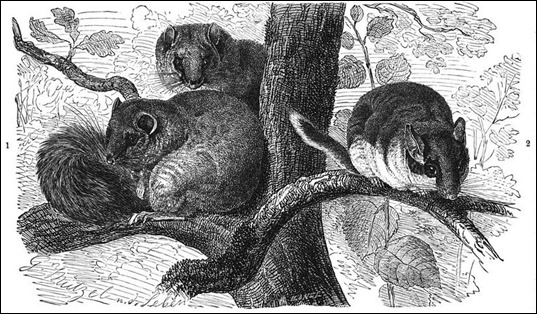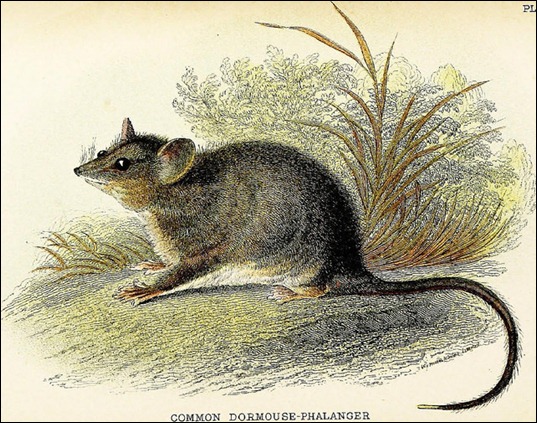The Edible Dormouse Posted by Serena on Aug 27, 2014 in Uncategorized
Cats are fascinating creatures, they teach us so much about nature! In fact nearly every day we study biology with them. They do the dissecting, leaving the dismembered carcasses outside the kitchen door, and we play the identification game: “Sooo, what did they kill for us last night? That looks like a rat’s head to me, and that’s a paw next to it … yes, that shoelace like tail definitely belonged to a rat. This one over here looks like a shrew … is that a bat’s wing?” and so on.
A few days ago we found a beautiful black fluffy tail, about 10 cm long. “My God, I hope they haven’t turned cannibal and eaten that little black kitten!” said Geoff. How does one set about identifying a tail without any other body parts for reference? Yesterday evening, however, Bella the cat gave us a clue: “It looks like I have to spell it out for you Humans … here’s some more evidence” she said, as she leapt through the kitchen window with the still warm body of the owner of a fluffy black 10 cm long tail. “It looks like a squirrel, but it’s not a squirrel” said Geoff. “I think it’s a ghiro (dormouse)” I observed.
 |
| Ghiri, by Gustav Mützel (CC) |
Il ghiro is a beautiful small rodent up to about 30 cm long, half of which is the fluffy tail which, unlike the squirrel’s that curls upwards, trails out horizontally behind it. The Italian dormouse is called Glis Glis, and is commonly found in woodlands throughout the peninsula, with the exception of the Pianura Padana, the big plain in the north of Italy. In Sardinia there’s a rare subspecies, gli glis melonii, which was thought to be extinct, but was sighted again in 2006.
The ghiro’s fur is grey to greyish-brown in colour on the upper parts of its body, while its tummy and the inner surface of its legs are white to pale buff. It’s a nocturnal animal, therefore it’s got big round eyes and large round ears. In the winter it hibernates for long periods, in fact it can sleep for up to seven months if the season is particularly cold (hmmm, sounds like a good idea!) From this habit comes the Italian saying “dormire come un ghiro” (to sleep like a dormouse).
 |
| No known copyright |
The Edible Dormouse, not just for cats!
In England, where it was accidentally introduced in 1902 when it escaped from a private collection, il ghiro is known as the “edible dormouse” or “fat dormouse”. In fact the poor little beast has been considered a delicacy since the times of the Romans, when it was eaten roasted as a snack! Today, here in Italy, il ghiro is a protected animal, and its consumption is illegal, but do cats give a damn about the law? … NO! In England, on the other hand, il ghiro is considered a pest because, being mostly vegetarian, it eats fruit and tree bark. But as Geoff pointed out, what does the most damage to the environment, a little dormouse, or human beings? Therefore, if the dormouse is a pest … what does that make us?
Most of the photos of ghiros that we’ve found show it with a greyish tail, and we haven’t yet discovered why our ‘specimens’ had black tails. Could it be that they were young, and the tail turns grey when they become adults? If you know the answer please let us know.
You can read more about il ghiro (in Italian) HERE

Build vocabulary, practice pronunciation, and more with Transparent Language Online. Available anytime, anywhere, on any device.




Comments:
Ashley Gaunt:
We are continually infested by these little blighters in our house in the woods near diecemo, north of Lucca. We cleared out a nest and couldn’t bring ourselves to kill the babies so we weaned them and 2 survived. The tails are black but less bushy when young but stay black as adults and so perhaps the colouration changes with variety?